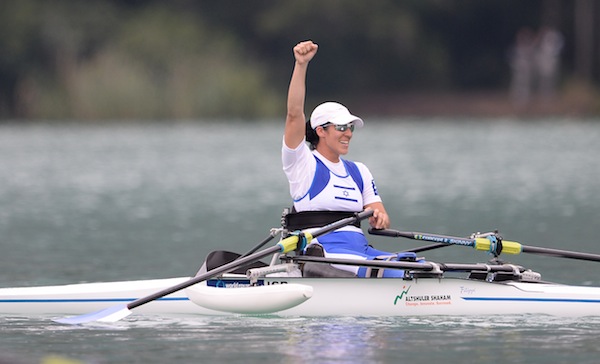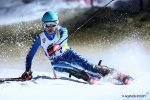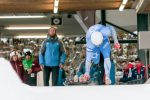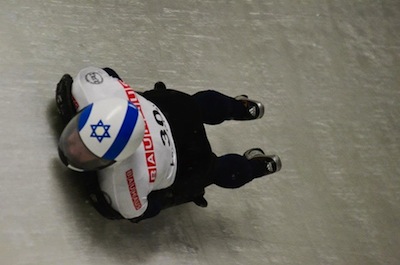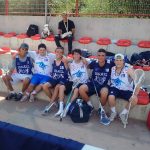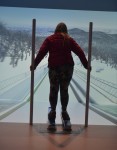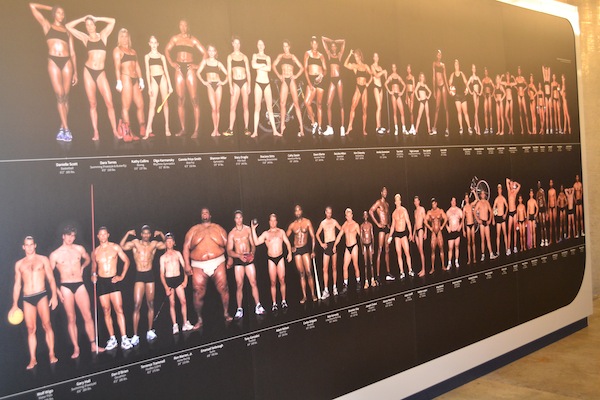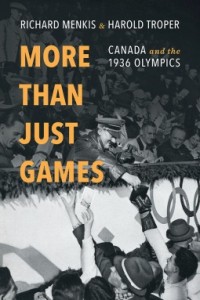Paralympic world champion rower Moran Samuel (photo by Detlev Seyb)
Israel is sending its largest-ever Olympic delegation – 89 athletes – to the Tokyo Olympics, set for July 23 to Aug. 8. And it’s sending 32 athletes to Tokyo for the Paralympics, which run Aug. 24 to Sept. 5. Do any of these competitors have a good chance of bringing home a medal?
Israel has won nine medals in 16 Summer Olympic Games: five bronze and one silver in judo, a bronze in canoeing, and a bronze and a gold in sailing.
In contrast, its Paralympic athletes have earned 123 gold, 123 silver and 129 bronze medals since 1964. However, the competition has gotten stiffer in recent years. At the London 2012 Paralympic Games, Israel won eight medals, including its first gold in wheelchair tennis. In 2016, the Paralympic team came home with just three bronze medals, won by Moran Samuel in rowing, Doron Shaziri in shooting and Inbal Pezaro in swimming.
Israel21c asked Jerusalem-based sports journalist Joshua “the Sports Rabbi” Halickman for his insights.
Olympic hopefuls
Like everyone else, Halickman has his eye on Linoy Ashram, 22. She won gold and bronze medals in the 2021 Rhythmic Gymnastics World Cup, among her many other medals. Last weekend, she won a further five gold medals at the Rhythmic Gymnastics Grand Prix in Tel Aviv – for ball, hoop, clubs, ribbon and all-around contests.
“Linoy is currently the world’s No. 1 rhythmic gymnast, based on competitions that took place in the past few months,” Halickman said. “She is one of the big hopefuls for the Israel Olympic committee. She was really gearing for summer 2020 and there was a concern that she would lose that level of achievement, but, a year later, she’s only gotten better.”
However, he noted, Ashram will be up against the Russian twins Arina and Dina Averina, who are widely expected to medal. “So it won’t be easy,” he said. “You’ve got to have a perfect performance; one mistake and you’re finished.”
Ashram will do one of her routines to a version of “Big in Japan,” a song by Alphaville. Indeed, Halickman said, “I feel she is going to be big in Japan.”
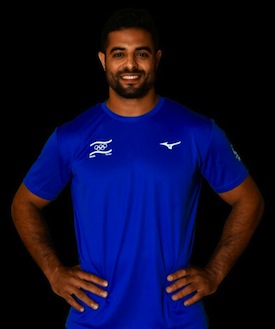
In judo, Sagi Muki, 29, is the reigning world champ in his under-81-kilogram weight category and is coming into the Tokyo Games as a realistic medal contender. “But he has not performed as well as he would have liked to in the past half year,” said Halickman. “He’s taken medals at minor competitions but not up to par compared to before the pandemic.”
Israeli judoka Peter Paltchik, 27, “has been at the top of his game over the past half year and has maybe a better chance than Sagi,” said Halickman.
Aside from those three, Halickman mentioned a couple of athletes who could surprise everyone and win a medal. One is female judoka Timna Nelson–Levy, 27, who won the 2021 Tel Aviv Grand Slam in the under-57-kilogram category. Another is swimmer Anastasia Gorbenko, only 17, who won a gold medal at the 2021 European Championships.
“Anastasia will compete in a slew of different swimming events. It’s the first time in ages Israel has a swimmer taking part in so many different categories,” said Halickman.
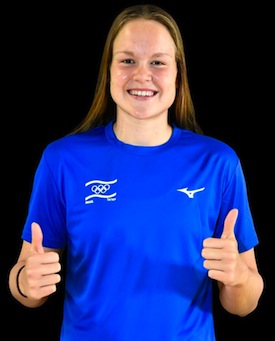
Perhaps the most anticipated Israeli Olympic event, however, will be baseball. With only six teams in the competition, Team Israel has a 50-50 chance of winning a medal, Halickman pointed out.
“It will be a top-level competition because they’ll be playing against world heavyweights like the United States, Japan and Mexico,” he said.
“Whenever Israel goes to the Olympics, Jews around the world want Israel to succeed,” he added. “But baseball is unique because it’s so American and this team is primarily American immigrants. They understand it’s a huge responsibility to represent the Jews in the Diaspora.”
Bottom line? “Israel could walk away from the Olympics with a half dozen medals or none. Nothing is guaranteed in sports,” said Halickman.
Paralympic hopefuls
Just as in the 2016 Rio Games, Israel’s Paralympic team is anticipated to do well in shooting, rowing and swimming in Tokyo. In particular, said Halickman, shooter Doron Shaziri and rower Moran Samuel are expected to reach the winner’s podium.
Shaziri, 54, has won five Paralympic silver medals and three bronze medals over seven Paralympic Games. His teammate Yulia Tzarnoy, who won a bronze medal at the last World Championships, also has a reasonable shot (pun intended) at medaling in Tokyo.
Samuel, 39, who competes in singles rowing, won a bronze medal in Rio. She’s also a national wheelchair basketball champion.
In swimming, the ones to watch are world champions Mark Malyar, 21, and Ami Dadaon, 20.
In May, Dadaon set two world records in his disability class at the European Para Swimming Championships: the 100-metre freestyle and 200-metre freestyle. The following month, at the World Para Swimming World Series, he improved his time in the 200-metre freestyle by less than a second, setting another world record.
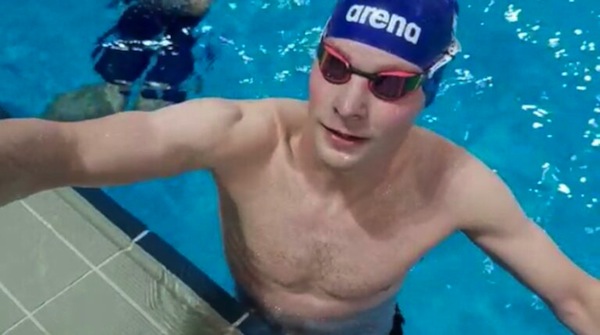
Malyar set a world record at the 2021 World Para Swimming World Series Finale in the men’s 800-metre freestyle in his disability class, breaking his own record, set in 2019, by more than 13 seconds.
To help Israelis get pumped for the Paralympics, the Telma cereal company is featuring the photos and stories of three Paralympic athletes on a special edition “Cornflakes of Champions” package. They include swimmer Veronika Girenko, rower Achiya Klein and goalball player Roni Ohayon.
Israel21c is a nonprofit educational foundation with a mission to focus media and public attention on the 21st-century Israel that exists beyond the conflict. For more, or to donate, visit israel21c.org.
* * *
Tel Aviv-born fencer Shaul Gordon, a former Richmond resident who now lives in Montreal, is part of Canada’s Olympic team. According to his bio on olympic.ca/team-canada, “Gordon made his senior fencing debut for Canada in 2013. He has since represented Canada at two Pan American Games and six FIE World Championships.
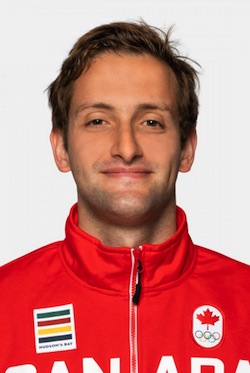
“Gordon earned his first career senior individual medal at the Pan American Championships in 2018, when he captured silver. Later that year, he won gold at an FIE Satellite event in Belgium.
“Gordon followed up his terrific 2018 with an even more successful 2019, starting with helping Canada bring home a third straight silver in team sabre from the Pan Am Championships. At the FIE World Championships, he advanced to the quarterfinals for the first time ever. At the Lima 2019 Pan Am Games, he also helped Canada to a team sabre silver, while winning a bronze in the individual sabre.
“Gordon fenced collegiately at Penn State for his freshman year before transferring to the University of Pennsylvania. He finished second at the NCAA Championships in 2013, tied for third in 2014, was a three-time All-American and finished his college career with an overall record of 143-30.”
For an interview with Gordon, in Hebrew, see jewishindependent.ca.

